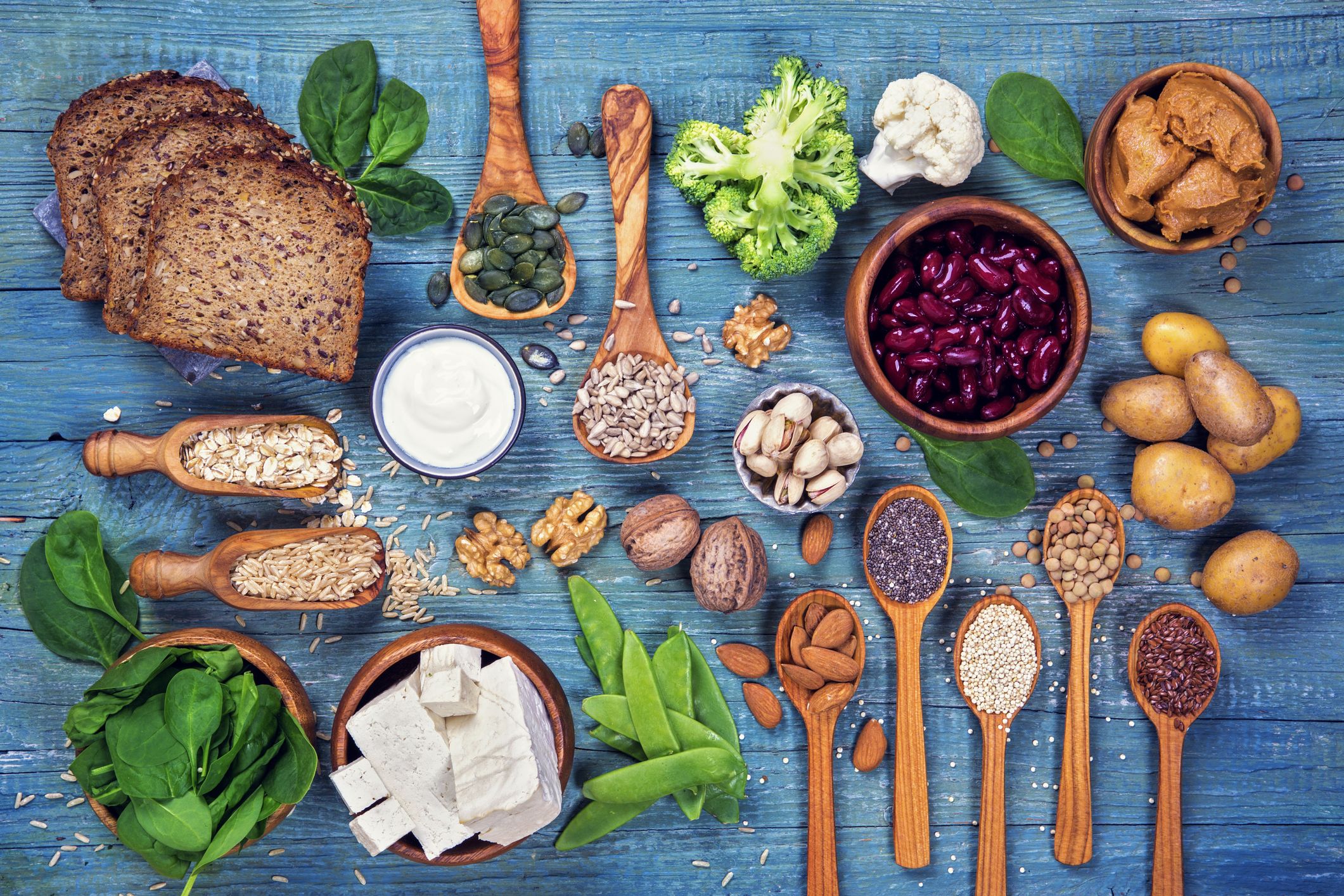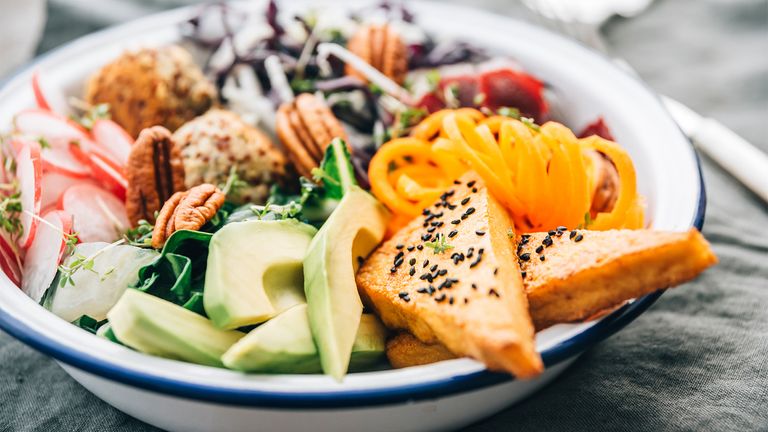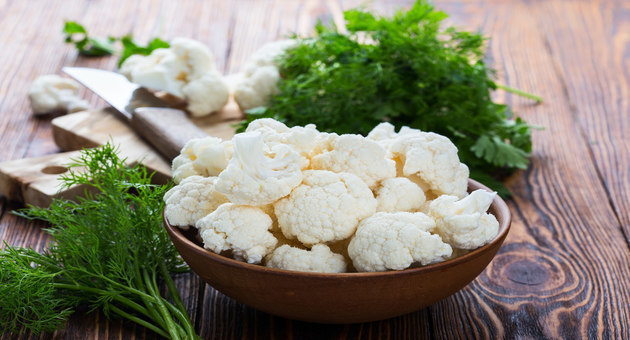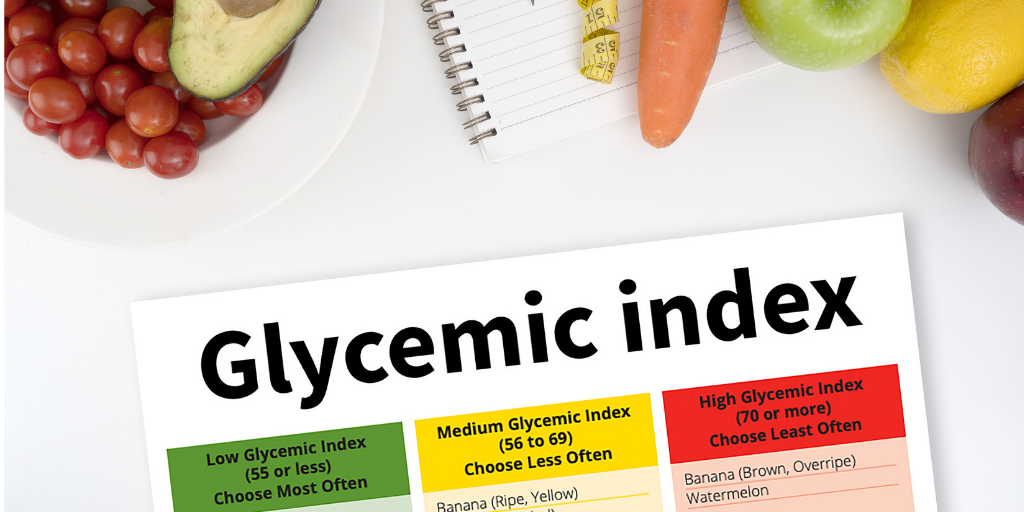You already know that consuming protein is essential in any diet. To maintain a healthy weight and heart, though, choose lean sources.

Plant protein, such as tempeh, is considered lean.
A balanced diet is vital for good health and involves the three main macronutrients: fat, carbohydrates, and protein. While fat and carbs have a history of getting a bad rap (hello, low-fat eating and the current star of the fad-diet scene, the ketogenic diet!), protein has long had a so-called health halo.
But what makes protein so beloved — and lean protein in particular so salubrious? The answer is far from simple.
“Adequate protein intake is vital to overall health. It’s the body’s building block, as bones, muscles, skin, and blood are all made up of protein,” says Melissa Nieves, RD, who works at Kemtai, a virtual personal trainer company in Bayamón, Puerto Rico. In addition to those functions, protein aids the repair and regeneration of cells in the body, notes MedlinePlus.
For weight loss, protein can be helpful, too, because it helps the brain recognize the hormone leptin, which can keep you full longer and provide your body with energy, explains Rima Kleiner, a registered dietitian who is based in Greensboro, North Carolina, and is the author of Dish on Fish, a seafood recipe blog. Research suggests that consuming protein increases leptin, which promotes a feeling of fullness.
The problem, though, is that some foods high in protein — think common animal sources such as steak and pork — are high in saturated fat, as the Harvard T.H. Chan School of Public Health points out. In excess, saturated fat can increase your risk for heart disease, notes the American Heart Association (AHA). “That’s where lean proteins come in,” Nieves says.
In fact, a higher intake of lean protein can possibly lower the risk of cardiovascular disease, whereas a higher intake of red meat is associated with an elevated risk, according to research.
How Much Protein Do You Need? It Depends
Although protein is a vital macronutrient, the AHA warns that most Americans eat far more protein than they need. The Centers for Disease Control and Prevention recommends that 10 to 35 percent of your calories come from protein — that is roughly 46 grams (g) of protein for adult women and 56 g for adult men, per the AHA.
According to the U.S. Department of Agriculture (USDA), lean protein sources have less than 10 g of total fat and 4.5 g or less of saturated fat per 100 g, or 3.5 ounces (oz).
Ready to make the switch to leaner sources of protein? Try these 15 foods that are high in the macronutrient.1
Turkey

Suzanne Clements/Stocksy
Per the USDA, 4 oz of raw ground turkey has about 167 calories, 22.2 g of protein, 2.3 g of saturated fat, and 8.6 g of fat. Four ounces of ground beef, on the other hand, has about 30 g of fat and 12 g of saturated fat, also notes the USDA.
Turkey is a substitute for chicken or beef — great for chili, tacos, and even meatballs. But turkey isn’t perfect.
“Unlike red meat, turkey is not rich in iron, but it is very lean and contains B vitamins, selenium, zinc, and phosphorus,” says Mark Windle, RD, a nutritionist who consults and writes for the website Fitness Savvy, based in Banbury, United Kingdom. According to the USDA, 4 oz also contains 0.176 micrograms (mcg) of vitamin B2, which is about 14 percent of the daily value (DV); 24.7 milligrams (mg) of selenium (45 percent of the DV); and 2.6 mg of zinc (23 percent of the DV).
B vitamins help improve blood circulation while contributing to the formation of red blood cells and healthy brain function, according to the Mayo Clinic, whereas zinc can help boost the immune system, says the National Institutes of Health (NIH).
Chicken

Cameron Whitman/Stocksy
But if you like chicken, you can feel good about eating it as far as protein sources go. Just opt for skinless breasts for a great source of protein that is low in fat, notes Nieves.
According to the USDA, one small skinless chicken breast contains 185 calories, 31.1 g of protein, 1.06 g of saturated fat, and 5.72 g of total fat.
Lean Ground Beef

Gabriel Bucataru/Stocksy
When watching your fat intake, you might be inclined to scratch beef off the menu. You don’t have to completely — just be more strategic with the cuts you pick.
According to the USDA, 4 oz of lean beef has about 170 calories, 23 g of protein, 3.49 g of saturated fat, and 8 g of total fat. It also has 2.4 mcg of vitamin B12 (100 percent of the DV) and 2.7 mg of iron (15 percent of the DV).
“Round steak or top sirloin and ground beef that is at least 90 percent lean can also be part of a balanced diet, despite the bad reputation red meat has received over the years,” says Nieves. “Red meat is a great source of vitamin B12 and iron, which the body needs to produce new red blood cells,” she says. Vitamin B12 is naturally found in animal products including beef, according to the NIH.
Beans and Legumes

Natasa Mandic/Stocksy
Beans and legumes are a lean plant-based protein that’s naturally cholesterol-free and also high in fiber, folate, and phytates, which are a plant-based antioxidant that may help reduce the risk of heart disease, high blood pressure, and certain types of cancer, says Nieves.
Per the USDA, 1/2 cup of chickpeas contains about 160 calories, 10 g of protein, no saturated fat, 2 g of total fat, and 5 g of fiber (17 percent of the DV). If you prefer lentils, 1/4 cup has about 140 calories, 11 g of protein, no saturated fat, 0.9 g of total fat, and 10 g of fiber (35 percent of the DV).
According to an article published in October 2015 in Clinical Diabetes, there’s robust scientific evidence supporting the health benefits of eating legumes, yet only 8 percent of U.S. adults eat legumes on any given day. Legumes have been shown to reduce the risk of type 2 diabetes, lower high blood pressure, and help control weight, likely due to the dietary fiber, notes the article.
Low-Fat Milk

Juri Pozzi/Stocksy
A cup of low-fat milk has about 120 calories, 10 g of protein, 1.51 g of saturated fat, and about 2.5 g of total fat, per the USDA.
If you can tolerate dairy, low-fat milk is another source of lean protein. It also contains calcium for healthy bones and teeth, but you should consider low-fat versions — which are still rich in nutrients — for a lean source, says Windle. Per the USDA, 1 cup of low-fat milk also has 250 mg of calcium (19 percent of the DV).6
Plain Yogurt

Lindsay Upson/Stocksy
Another dairy product that’s a good source of lean protein is plain yogurt. Per the USDA, 1/2 cup has about 35 calories, 3 g of protein, 1 g of saturated fat, and 1.5 g of total fat.
But yogurt isn’t only tasty, the live cultures in yogurt help stabilize healthy gut bacteria normally present in the bowel, says Windle. This can improve gut function, which may help ease symptoms of irritable bowel syndrome, yeast infections, eczema, and constipation, notes the Cleveland Clinic.
Salmon

Davide Illini/Stocksy
When it comes to lean animal protein, seafood is another smart choice, as it’s packed with vital nutrients like heart-healthy omega-3 fatty acids and has less saturated fat and cholesterol than any other animal protein, says Kleiner.
According to a previous meta-analysis, eating fish at least one time per week is linked with 15 percent lower risk of cardiovascular disease mortality when compared with those who don’t eat fish. Also, eating fish has been associated with a lower risk of diabetes.
Salmon is a particularly good choice in the seafood aisle, as 1 oz has 36 calories, 5.8 g of protein, 0.23 g of saturated fat, and 1.2 g of total fat, according to the USDA. “Low-fat, high-protein foods like salmon give you the strength you need to power through a workout,” continues Kleiner.8
Tuna

Marti Sans/Stocksy
But salmon isn’t the only lean protein seafood. Tuna falls in this category, too, as it’s also loaded with heart-healthy omega-3 fatty acids to protect your heart and fight off inflammation, says Nieves. Three ounces of tuna has about 1.2 g of omega-3 fatty acids, says the Cleveland Clinic.
And Kleiner says that tuna is among the highest protein sources among fish. Per the USDA, 100 g of canned light tuna in water, with the solids drained, has 96.3 calories, 20.3 g of protein, 0.24 g of saturated fat, and 0.64 g of total fat.
Tuna tends to be high in mercury, though, and contains more mercury than some types of fish, per data provided by the Food and Drug Administration. In excess, mercury can lead to mercury poisoning.
The Environmental Defense Fund recommends limiting tuna consumption to up to three times per month if you’re an adult. For women, each portion of canned tuna should be 6 oz; for men, 8 oz.
Tofu

Jeff Wasserman/Stocksy
Tofu is a soybean product and a staple in many vegan and vegetarian diets. It’s also a good source of plant-based protein that provides adequate amounts of all essential amino acids, explains Nieves. “It’s a great option for those that avoid eating animal products, and it’s naturally cholesterol-free,” she says. Each 3 oz of tofu has 79 calories, 8 g of protein, 0.5 g of saturated fat, and 4.5 g of total fat, notes the USDA.
According to an article published in July 2019 in Nutrients, soy, which tofu is made from, contains isoflavones, which are antioxidants that might offer some protection against heart disease, stroke, diabetes, and cancer.
Per the USDA, 3 oz of tofu also contains 150 mg of calcium (11.5 percent of the DV) and 1.44 mg of iron (8 percent of the DV).
Cottage Cheese

iStock
Cottage cheese is often used in lasagna and spread out on crackers. Did you know that it’s also a good source of calcium? According to the USDA, 1/2 cup of cottage cheese has about 110 calories, 9 g of protein, about 3 g of saturated fat, 5 g of total fat, and 150 mg of calcium (11.5 percent of the DV).
Pork Loin

Kirsty Begg/Stocksy
Maybe you don’t feel like chicken, turkey, or beef tonight. No worries, pork can be another lean protein choice — just make sure you choose the right cut.
A 4 oz pork loin for the family has about 188 calories, 24.1 g of protein, 3.12 g of saturated fat, and 9.4 g of total fat, per the USDA. It also contains 405 mg of potassium (8.6 percent of the DV), 1.9 mg of zinc (17 percent of the DV), and 27 mg of magnesium (6.4 percent of the DV).
“Lean cuts of pork such as loin and chop — pork tenderloin, pork loin, pork chops, or sirloin roasts — are low in fat, making them a great choice of lean protein,” Nieves says.12
Eggs

Jill Chen/Stocksy
According to the USDA, one large whole egg has 74.4 calories, 6.24 g of protein, 1.61 g of saturated fat, and 5.01 g of total fat. One large egg white, on the other hand, has about 17 calories, 3.6 g of protein, no saturated fat, and 0.05 g of total fat.
Eggs are naturally high in cholesterol, so there are concerns about this breakfast staple increasing the risk of heart disease. However, results from studies evaluating the link between eggs and heart disease have been inconsistent, says the Mayo Clinic. Some studies have found a link while others haven’t, so more research is needed.
But although eggs may have an undeserved negative reputation, in addition to being a source of protein, they contain carotenoid antioxidants (lutein and zeaxanthin), which might help prevent macular degeneration, explains Nieves. A study published in February 2020 in Clinical Nutrition found evidence suggesting that consuming two to four eggs per week could reduce the risk of age-related macular degeneration.
According to the American Optometric Association, these carotenoids protect the eyes from high-energy light waves and promote healthy cells in the eyes.
Liver

Liver might not be your first choice for dinner, but it’s worth consideration if you’re looking for another lean protein source. As a bonus, it’s loaded with vitamins and nutrients.
Per the USDA, 4 oz of raw chicken liver has 134 calories, 19.1 g of protein, 1.8 g of saturated fat, and 5.4 g of total fat. It also includes 10 mg of iron (55 percent of the DV), 3,720 mcg of vitamin A (413 percent of the DV), and 3 mg of zinc (27 percent of the DV). Vitamin A is good for eyesight, notes the NIH.
Edamame

iStock
Another good source of lean protein is edamame, which are young soy beans — a classic Japanese snack. In 1/3 cup of the beans, you’ll get 8 g of protein in about 100 calories, with no saturated fat and just 3 g of total fat, per the USDA.
“Immature, young soybeans are high in isofavones, which resemble human estrogen hormone. So edamame is admittedly a controversial food, as high estrogen levels are thought to increase the risk of some cancers, including breast cancer,” warns Windle.
In one study, 140 women recently diagnosed with breast cancer were assigned to eat either soy protein or a placebo that resembled soy protein for two to three weeks.
After the study, the women had surgery to remove the cancer. When researchers reexamined their breast tissue, the women in the soy protein group had genetic changes that could cause cancer to regrow, suggesting that soy may stimulate breast cancer in some women.
Research is split on this, though, and Windle further notes that it’s also been suggested that edamame could have a slight protective effect against breast cancer. (The American Cancer Society notes the latter potential benefit.) More research is needed to say one way or the other.15
Quinoa

Cameron Whitman/Stocksy
Are you looking for a rice substitute that’s lean? If so, 1/4 cup of uncooked quinoa has 170 calories, 6 g of protein, no saturated fat, and 2.5 g of total fat, according to the USDA. And as a whole grain, it’s also a good source of fiber, containing 3 g in that same 1/4 cup (10.7 percent of the DV).
Research published in September 2018 in TheJournal of Nutrition found that 16 g of whole grains may offer some protection against type 2 diabetes risk, lowering the risk by 11 percent and 7 percent for men and women, respectively. Dietary fiber may be the key to this so-called superfood’s powers: It’s linked to a healthier weight and may help prevent diabetes, according to the Mayo Clinic.


